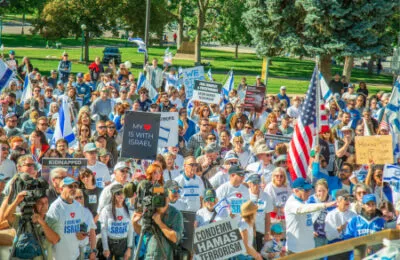 NEARLY ONE year ago, global media and public opinion raged over the humanitarian crisis and near genocide facing the Yazidi population of northern Iraq at the hands of the Islamic State as they advanced on the Sinjar region.
NEARLY ONE year ago, global media and public opinion raged over the humanitarian crisis and near genocide facing the Yazidi population of northern Iraq at the hands of the Islamic State as they advanced on the Sinjar region.
At that time, major Western media outlets reported on the massacres inflicted on the Yazidis by IS, the enslavement and rape of young Yazidi women and girls and other atrocities the Yazidi minority were facing last summer.
Since August, 2014, however, the airstrikes against IS have gradually slowed down to a complete halt and the humanitarian aid has slowed down.
With IS fighters still roaming the land and the fighting in Iraq still very much a daily reality, has the international community forgotten about the distressed Yazidi people?
In a phone interview last week on May 26, Tazpit spoke with Mirza Ismail, a Yazidi leader and head of the Yezidi Human Rights Organization International. Ismail gave a first-hand account on the current situation and plight of the Yazidis still in Northern Iraq and the Sinjar region.
It is an ongoing very bad humanitarian crisis, the fate of the Yazidi nation, Ismail said.
Right now I am in Northern Iraq; I visited Mt. Sinjar earlier and came back down. Overall I made visits to Yazidi refugee camps such as Khanke, Sharyia and Esia to see the current situation with my own eyes.
In general our organization tries to maintain the awareness to the ongoing humanitarian crisis and plight of the Yazidi nation and its refugees, with media, countries, politicians, appealing for practical aid and help, Ismail told Tazpit.
The Yezidi Human Rights Organization International is working on trying to relocate refugees, who are currently in camps in Turkey, to Canada. So far Germany has taken 80 Yazidi girls and granted them asylum. They agreed to take a total of 1,000 Yazidis. We hope that other Western countries can take a lesson from Germany and agree to provide asylum.
ACCORDING TO a UN Human Rights report, the IS campaign against the Yazidis has resulted in over 50,000 refugees and several thousand killed between July and September, 2014. Having fled up into the Sinjar Mountain, thousands of Yazidis found themselves stranded and besieged by IS forces.
This imminent threat of genocide was only averted by US airstrikes and air drops of humanitarian aid packages onto Mt. Sinjar.
Ismail told Tazpit that there are still 12,000 Yazidis held up on the mountain, most of them children and the elderly. Many of the children are orphans of Yazidi fighters massacred by IS. They are living in very bad humanitarian conditions, he said.
There is no medical assistance here and people are suffering from disease. They are afraid to come down from the mountain.
They are afraid of Islamic State, afraid to be killed like their family and friends and they dont trust the Iraqi soldiers and Iraqi government, he said.
Ismail explained the Yazidi source of general distrust. Iraq persecuted and discriminated [against] Yazidis as well. Iraq let the genocide of the Yazidis happen, they abandoned the Yazidis to be slaughtered.
There are still violent acts and killings of Yazidis. Just two weeks ago a young Yazidi man was found tied and mutilated to death, another disappeared from Eisa camp and was later found dead.
According to Ismail, overall, there are 430,000 Yazidis, most of them living in refugee camps in northern Iraq and Turkey in unbearable conditions.
With summer coming again life will certainly get even more difficult than it is now. The hot weather conditions in northern Iraq can be severe, and there isnt even a single fan to keep people cool.
In the northern camps, they [Yazidi refugees] have not had relief and aid in the last two or three months, said Ismail.
There is some UN presence; I have seen UNICEF around; I heard that Doctors Without Borders may be active. However, not a single organization has sent any aid up to Mt. Sinjar. It is mainly the children who are suffering the most. They have no education, no teachers are coming. They suffer from malnutrition, having less than two meals a day.
Ismail recounted a general feeling of hopelessness and fear both on Mt. Sinjar and the refugee camps.
THERE ARE reports still coming out about Yazidis being raped, murdered and sold into slavery; as recently as May when IS itself claimed to have slaughtered 300 Yazidis near Mosul.
Those who managed to flee the massacres are still threatened with severe weather conditions, disease and starvation.
There are people in need of surgery, I met with at least 10 different Yazidis who need to have lifesaving surgery, but no access to doctors. I met a young girl who was still waiting for a needed surgery she told me, If I die then I die. The people are losing any hope.
ADDING A Jewish angle to the story, Ismail told Tazpit, In Canada, I am working closely with Mrs. Rananah Goldhar [a Jewish pro-Israel activist based in Toronto] who is trying her hardest to raise awareness and activism on behalf of the Yazidis to save them from the recent horrific atrocities facing them.
My organization is working to influence the Canadian government to take in refugees for asylum, at least for those Yazidis with some relatives in Canada.
It seems, according Ismails eyewitness account, that the Yazidi humanitarian crisis is far from over.















